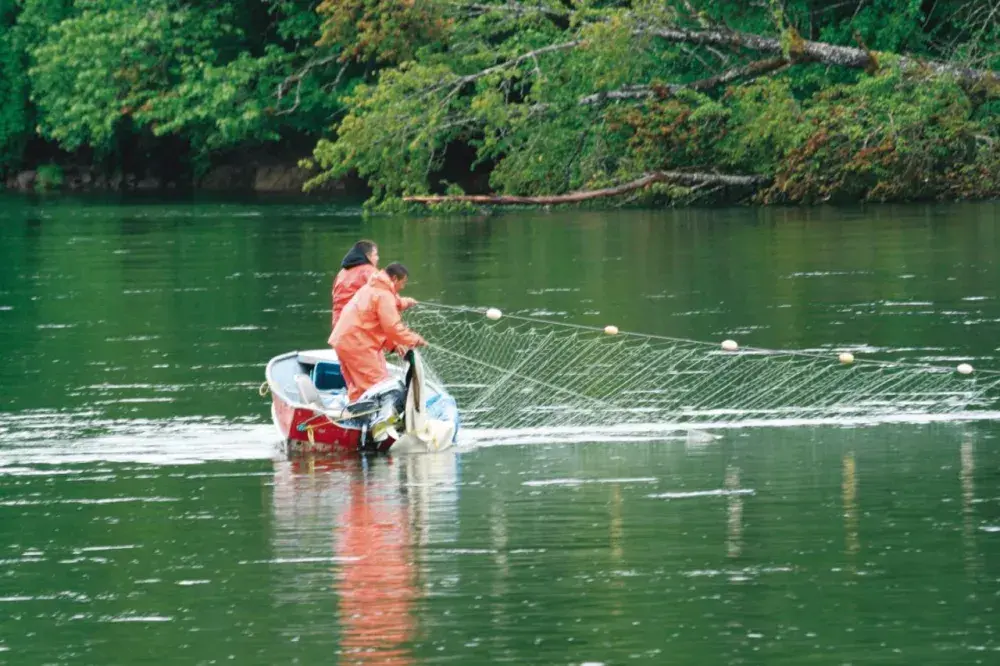The recent disease outbreak at the Dixon aquaculture site in Clayoquot Sound has highlighted the lack of communication between regulators and First Nations when it comes to salmon diseases. Following last week’s discovery of infectious haematopoietic necrosis (IHN) in an aquaculture facility owned by Mainstream Canada, two Nuu-chah-nulth Nations were surprised to discover the diseased fish were being transported up the Alberni Canal to Port Alberni for disposal.
Both Tseshaht and Hupacasath First Nations rely heavily on the wild salmon populations currently migrating up the canal. Their concerns over the potential spread of disease to those stocks was amplified by the lack of information flowing from industry and Canada’s enforcer of aquatic animal health, the Canadian Food Inspection Agency (CFIA).
See original story: http://www.hashilthsa.com/news/2012-05-23/mainstream-apologizes-failing-inform-local-first-nations-about-fish-disposal
“We’d like to have known it was going to happen,” said Fisheries manager and biologist for Tseshaht, Andy Olson. “We’d also like to know what is involved with the fish…We don’t know what they’re looking for. That’s the problem. We don’t know if there are other things wrong that they’re not telling us.....It would have been nice to have access to some of the fish for sampling.”
Tseshaht did receive information from Mainstream Canada after initiating contact and requesting communication. Mainstream also contacted Ahousaht after the disease outbreak, following the protocols outlined in their agreement with the nation.
But nations would like to hear from those controlling the diseased fish’s disposal. The lack of information flowing from the CFIA is part of a larger communication gap with First Nations on salmon disease issues.
“There’s a lot of frustration that the CFIA seems only to be talking to industry,” said Uu-a-thluk biologist for the Central Region, Katie Beach. “Our regulators have dropped the ball here.”
According to CFIA media spokesperson, Guy Gravelle, disease quarantines such as the one in Clayoquot Sound are issued by the CFIA to the owner of a facility. The CFIA works collaboratively with industry and the province, but appears to have no established process for communicating with First Nations about these issues.
Following the Cohen Commission’s look into the collapse of Fraser salmon, the CFIA developed a draft surveillance plan for three infectious salmon diseases in British Columbia, including IHN. The agency opened the plan for public comment last November, and during the public consultation process which ended in March, Beach provided comments on behalf of several Nuu-chah-nulth Nations. The comments included suggestions for improving information flow and questions from the nations about surveillance locations.
“Within the plan, there’s very little discussion about communication with First Nations. I’ve been on a few calls lately where some of the First Nations groups are running up against this. It’s an ongoing pattern which hasn’t been resolved.”
So far, the CFIA hasn’t responded to the nations’ submission. And now a second draft of the surveillance plan is due for release. “We need to put some onus on the regulators to have a plan that’s going to protect wild stocks and include First Nations in what’s going on in their territory, especially if it puts their livelihoods at risk,” Beach said.
Others point out that Nuu-chah-nulth Nations and the CFIA have very good communication in some areas. Could those channels be used in situations like this one?
“Nations have been working with the CFIA for 15 years monitoring paralytic shellfish poisoning (PSP) quite successfully,” said Uu-a-thluk biologist for the Southern Region, Jim Lane. “The CFIA directly contacts the nations about the marine biotoxin sampling program. They already have these communication links with Nuu-chah-nulth in the system.”
The successful relationship that Nuu-chah-nulth have with the CFIA regarding biotoxin monitoring is one model for improving communication flow on other issues. Together nations and staff hope to open the channels and work together for the benefit of wild salmon and those who depend on them.
Related: http://www.hashilthsa.com/news/2012-05-28/information-provided-mainstream-canada-re-ihn







